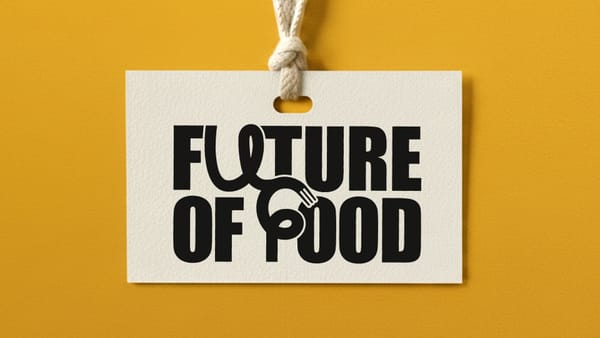UNSTUCK 006: Why Most Alt-Protein Research Is Bollocks, And The Answers To Three Key Questions To Improve It
The state of research in alt-protein and how to do it better. Much, much better.

Vast amounts of time and money are wasted asking people rational questions that confirm pre-conceived notions and agendas but don’t relate to real needs or behaviors. We should invest in setting the correct context, uncovering deeper emotional truths, and building propositions that meet consumers goals.
Let’s be frank. The constant stream of poorly designed surveys from companies, consultants and foundations are hindering the progress of the alt protein industry. They continue, through various gymnastics, to claim that the mass market of people care about sustainable and ethical consumption and it's just a matter of sorting out price, taste and convenience before the ‘holy grail’ is achieved. This is setting us up for one almighty disappointment.
But there is hope. Here at Unstuck HQ we recently had a great conversation with a leading industry think tank trying to figure out how to improve the way they do research. They asked us three thought provoking questions. We’ll get to the specifics in a bit, but let’s start first with an illustration of what we mean by rubbish research.
Never mind the (McKinsey) bollocks
We didn’t have to look very far back in our inboxes for a perfect example – the latest gem from McKinsey’s agriculture practice titled “Novel Proteins: Consumer appetite for sustainability made ingredients” just came out in March of this year. The firm's pronouncements may not be as revered as they once were, but they’re still influential among start-up founders and investors, or at least have good enough SEO to appear to be.
After surveying 1551 US consumers who are the primary household shopper, across 50 states (good breadth and sample size; pleasingly focused on the mass consumer) here comes the big a-ha: “sustainably produced” is the new “plant based” with around 50% of respondents saying they would be very or extremely likely to buy a product with the claim.
There we have it. Nail taste, price (in fact you don’t even need to do that since more than 20% of the market are willing to pay FOUR TIMES as much for products that featured a novel ingredient), whack a 'sustainably produced' claim on the packaging, source your impressive looking pitch deck charts back to McKinsey, and you’re off to the races.
Sounds too easy? It’s because it’s a load of bollocks. We hear all the time about how sustainable and ethical considerations drive Gen Z more than any other generation. Yet Shein, who targets those same Gen Zs with ultra fast fashion selling t-shirts for less than an Impossible Burger, could be valued up to $90bn in its upcoming IPO.
Before you immediately re-allocate any budget you might have put behind market research, brandishing it all a massive waste of time and money, there is a better way to deploy research to uncover winning insights that can take sustainable foods mainstream. Here's our answer to those three brilliant questions.
Question 1: What is the biggest gap in our consumer understanding?
In short, it’s context. The majority of industry research comes from the wrong starting point: understanding consumer attitudes and behaviors between plant-based (or relevant novel) ingredients vs. conventional ones. This is not what most consumers are thinking about when deciding what to have for dinner ("shall we have chicken or chicken from plants tonight"?), so it forces an artificial response from the get-go.
The right starting point is an open exploration and understanding of attitudes to food: what is top of mind when people shop, how do they think about what to buy, what do they worry about, what they’d like to change and why, what would help them to make that change? This is how you identify the variables that are meaningful to consumers. It requires deep qualitative discussions led by a skilled moderator, not jumping straight into a mass quantitative survey. In this case you don’t even bring sustainability into the discussion, unless a consumer raises it. Then you explore it and dig deeper as to what they really mean.
For example, had Innocent Smoothies set out to create a healthier Coca-Cola, they would have ended up with a very different proposition. However, they recognised that consumers worried they weren’t getting enough fruit and vegetables in their daily diet, and created a brand that didn’t preach to consumers to have their 5-a-day, but rather was engaging and delivered a simple and delicious way to increase their fruit and veg intake. It was priced significantly higher than Coca-Cola, and arguably is less convenient given the cold-storage required. This gave a springboard to a category of fruit and veg smoothies, including supermarket own label priced more competitively. And then Coca-Cola acquired Innocent in a defensive move worth hundreds of millions of pounds, which enabled the brand to scale in a way it could never have done on its own.
Question 2: What research is key to sales that are companies not prioritizing?
There is an inherent assumption in most research we've seen that consumers think and behave rationally when it comes to choosing what to buy for dinner, or eat in a restaurant. This is completely flawed. Real consumer behavior is based on emotions, and the industry is not prioritizing understanding how those emotions drive what they order or put in their baskets.
Over the years, various admen have been attributed the sagacious quote about how “people don’t think what they feel, don’t say what they think and don’t do what they say”. Designers, the problem-solvers that they are, have been using the same idea in the form of empathy mapping. We banged on about it in our new year’s resolutions for the alt protein industry, encouraging leaders to “stop thinking rational, start thinking emotional”. The key thing to understand across all of these is the sequence – if you want to understand and influence behavior, you have to start with feeling.
Why we buy what we buy is driven by ingrained beliefs developed over time: from our cultures, how our parents raised us, our social circles, influencers and brand marketing. It’s why we pay for bottled mineral water when rationally we may know it’s not actually better than tap water, nor is it good for the planet. The US bottled water market last year had its highest ever sales volume, and is projected to continue growing.
By measuring emotional response rather than rational response to ideas and solutions, companies can get closer to understanding whether they are positioning their products in a market share-winning way, and learn about how to optimize them. For research to ask consumers if they are willing to pay more money for an abstract concept of ‘novel ingredients’ is completely meaningless. Consumers buy physical products, often branded, with the branding being what they are paying for. Instead, mock-up what consumers will see on the shelves, put it through a response test like System 1 and get a cost-effective, fast read against a robust database to see how you’ll fare in the real world.
Furthermore, the industry is far too focused on consumer understanding. It doesn’t matter whether consumers understand what we mean or not (bar ensuring allergen and ethical needs are clearly communicated) – it matters that they are excited by the concept. Fairlife milk has grown rapidly in the US market in the last 10 years, but does anyone really know what ‘ultra filtered’ means? What matters is it talks to parents' goals of buying pure, nutritious milk for their family. A good example of understanding goals and then positioning against them.
Question 3: What is the most important resource we could create to plug the gap?
Category level research is difficult and challenging because context is so important. Consumers don’t buy ‘meat’ they buy chicken, pork, lamb; nor do they buy ‘dairy’ they buy milk, yogurt, ice cream. Even before that, they are actually buying for occasions, something for a mid-week dinner or a treat for Friday night.
Any research done must be in the occasion and category context the consumer is operating within. Too much research is tainted before a consumer has even been asked a question, recruiting respondents based on whether they understand the distinction between industry categorisations (e.g. plant-based, tofu, precision fermentation) when it really doesn’t matter to their shopping mission.
A good practical step to start moving the needle on sustainable foods now, instead of some theoretical future of price/taste/convenience parity, would be to do a deep-dive on a specific consumer occasion and then turn it into an actionable playbook for brands. This could be breakfast, on-the-go snacking or any other real food situation that’s ripe for disruption. With this context in place, dive deep on the goals, needs, fears and desires of consumers split by specific countries and generations and only then conduct large-scale quantitative research to size the relative importance of these. The resulting findings and insights should be packaged into playbooks that make them actionable and repeatable by both B2C and B2B players as they develop ingredients and build consumer propositions that meet actual needs.
Context, emotion and action – now that’s a research agenda we can get behind.






